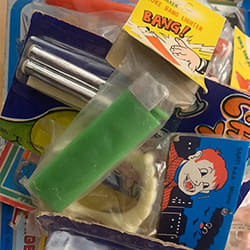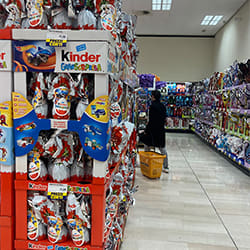
Photo 1
I guess the land around the “navels” in both these cities is exceptional, first-class land and would command commensurate prices. And while such is the character of this area in Madrid, I think few people would know that just 300 m or so from that point is a vegetable garden where tomatoes and lettuces are grown.
This vegetable garden is in the courtyard of the Convent of Las Descalzas Reales, which was built in the middle of the 16th century. The convent is cut off from the secular world and the basic principle is self-sufficiency, so the nuns spend their days in prayer and labor, including keeping a simple vegetable garden. A palace of Holy Roman Emperor Charles V once stood on this site. It is also the place of birth and death of his youngest daughter Joanna, who later established the Convent. Thus, it has had a deep connection with generations of Spanish royalty, so the Spanish name includes “Reales” (“Royal”).
Photo 2 shows the Convent. The building at the back on the right with the vertical stripe design is the first department store in the El Corte Inglés chain, which now has 206 stores across Spain. “El Corte Inglés” means “English tailoring,” which reminds me that the head Mitsukoshi Department Store is in Nihombashi, so both stores stand at the heart of their respective countries. Mitsukoshi’s origins also lie in a kimono fabric merchandising company, and similarly El Corte Inglés began with trade in clothing, which is interesting isn’t it?

Photo 2
Returning to the Convent, if you go about 400 years back in time to February 17, 1615, you find a Japanese person who was baptized in this Convent and entered the Catholic faith in the presence of His Majesty King Philip III of Spain. This was Hasekura Tsunenaga, the Vice Envoy who led the Keicho Embassy under the orders of Date Masamune, the Lord of the Sendai Domain. By the way, the Senior Envoy and interpreter was the missionary priest Luis Sotelo from Seville. Image 1 shows a fresco painted on the wall of the Sala Regia (“King’s Room”) in the Quirinal Palace, an official residence of the President of the Italian Republic in Rome.

Image 1
The delegation set sail from Tsukinoura Port in the Sendai Domain in October 1613. It crossed the Pacific Ocean in 3 months, landed in Mexico, then took the overland route to the Atlantic Ocean coast before departing from Veracruz Port. Four months later it arrived in Spain, its first landing place in Europe. They were the first Japanese people to cross the Pacific and Atlantic Oceans. From Spain the delegation proceeded through France to Rome, where Tsunenaga had an audience with Pope Paul V to whom he presented a letter from Lord Masamune.
The return journey from Rome took the delegation through Spain, stopping over in a small village called Coria del Río, in the outskirts of Seville, but some of the ship’s crew decided to stay there as they did not want to repeat the trials and tribulations they experienced on the forward journey. In consequence, out of a population of over 30,000, there are now 711 people who have the surname "Japón" (“Japan”) and have inherited the DNA of Japanese people from the Keicho era.
Postscript
I’m not sure if you could call this a bonus, but there is a famous sweet from Sendai called “Hasekura-yaki,” which honors his great achievements as a pioneer of exchange between Japan and Europe. It is a masterful blend of Japan and the West: cookie pastry made of butter and eggs wrapped around sweet white bean paste mixed with walnuts. It is like forbidden fruit, a sweet treat I absolutely must have, along with Kurozato Manju (brown sugar steamed buns), whenever I go back home to Japan for a while and get the chance to visit Sendai.




























































